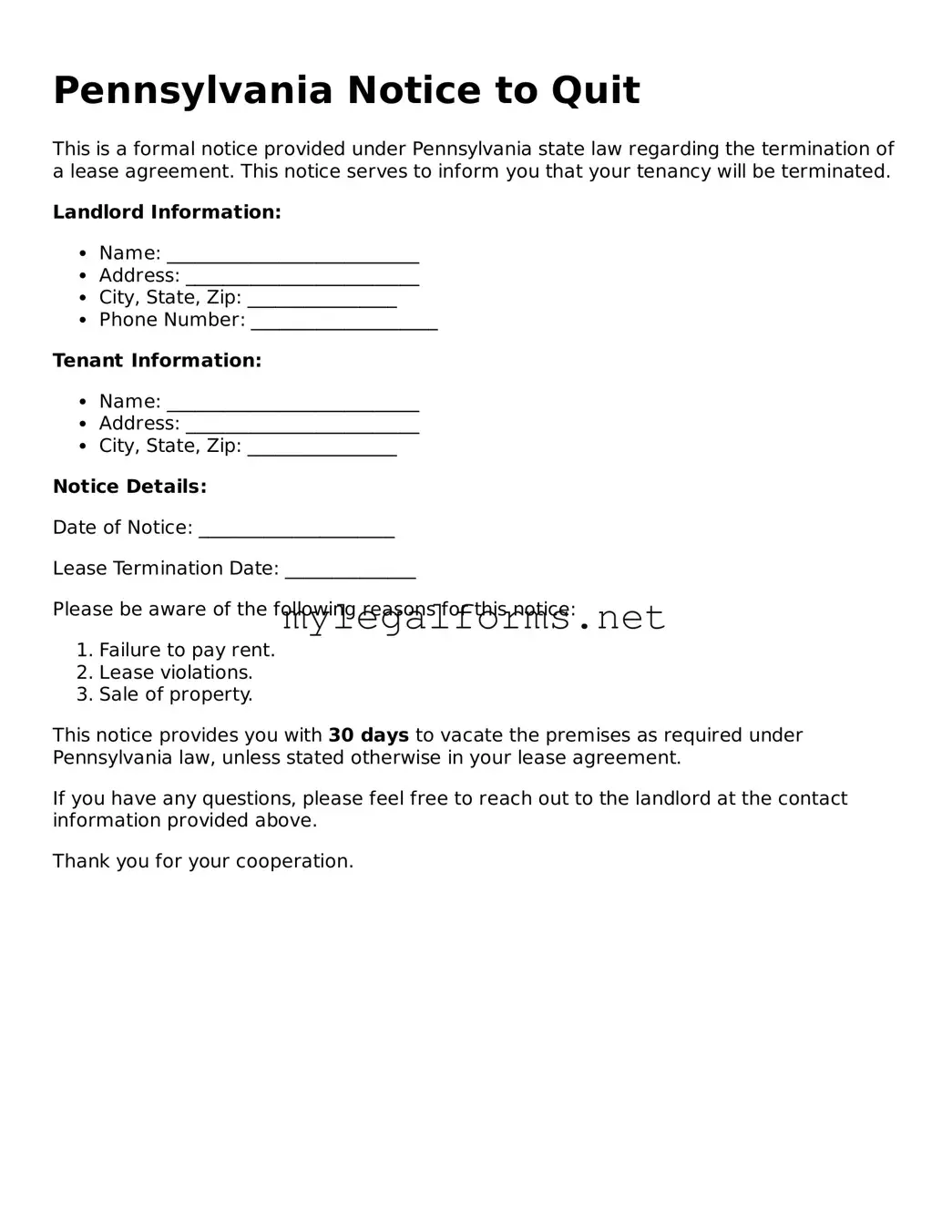Notice to Quit Document for Pennsylvania State
The Pennsylvania Notice to Quit form is a legal document that a landlord uses to inform a tenant that they must vacate the rental property. This notice typically outlines the reasons for termination of the lease and provides a specific timeframe for the tenant to leave. Understanding this form is crucial for both landlords and tenants to ensure compliance with state laws and to protect their rights.
Launch Notice to Quit Editor
